The AMD Ryzen 9 3950X Review: 16 Cores on 7nm with PCIe 4.0
by Dr. Ian Cutress on November 14, 2019 9:00 AM ESTGaming: Grand Theft Auto V
The highly anticipated iteration of the Grand Theft Auto franchise hit the shelves on April 14th 2015, with both AMD and NVIDIA in tow to help optimize the title. GTA doesn’t provide graphical presets, but opens up the options to users and extends the boundaries by pushing even the hardest systems to the limit using Rockstar’s Advanced Game Engine under DirectX 11. Whether the user is flying high in the mountains with long draw distances or dealing with assorted trash in the city, when cranked up to maximum it creates stunning visuals but hard work for both the CPU and the GPU.
For our test we have scripted a version of the in-game benchmark. The in-game benchmark consists of five scenarios: four short panning shots with varying lighting and weather effects, and a fifth action sequence that lasts around 90 seconds. We use only the final part of the benchmark, which combines a flight scene in a jet followed by an inner city drive-by through several intersections followed by ramming a tanker that explodes, causing other cars to explode as well. This is a mix of distance rendering followed by a detailed near-rendering action sequence, and the title thankfully spits out frame time data.
There are no presets for the graphics options on GTA, allowing the user to adjust options such as population density and distance scaling on sliders, but others such as texture/shadow/shader/water quality from Low to Very High. Other options include MSAA, soft shadows, post effects, shadow resolution and extended draw distance options. There is a handy option at the top which shows how much video memory the options are expected to consume, with obvious repercussions if a user requests more video memory than is present on the card (although there’s no obvious indication if you have a low end GPU with lots of GPU memory, like an R7 240 4GB).
All of our benchmark results can also be found in our benchmark engine, Bench.
| AnandTech | IGP | Low | Medium | High |
| Average FPS | 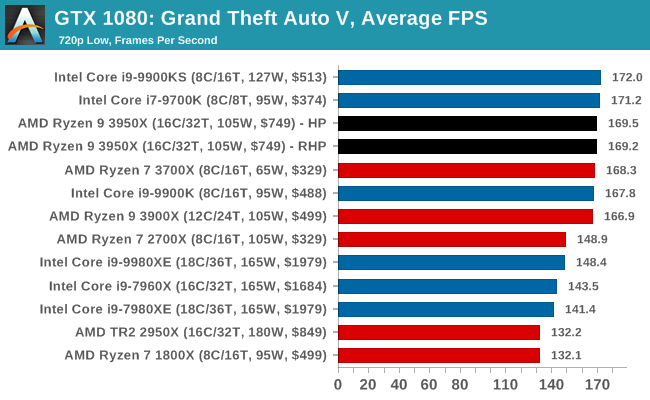 |
 |
 |
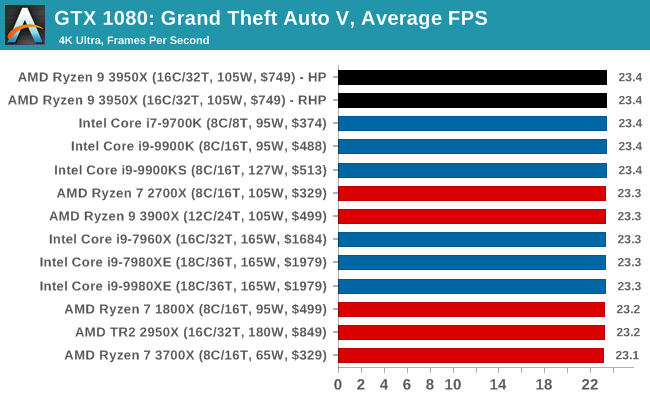 |
| 95th Percentile | 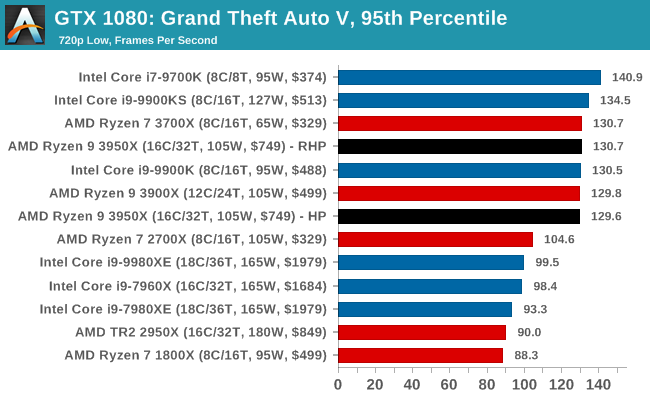 |
 |
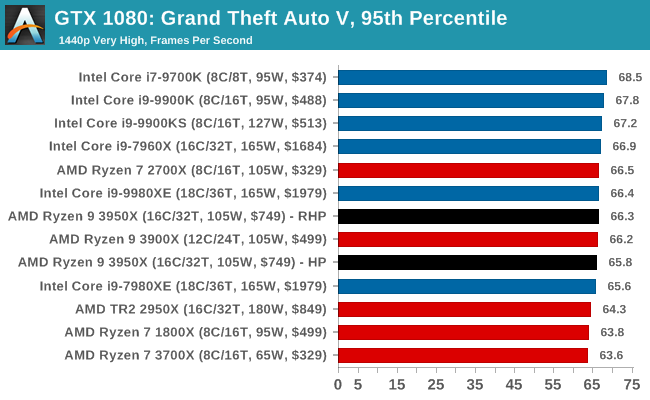 |
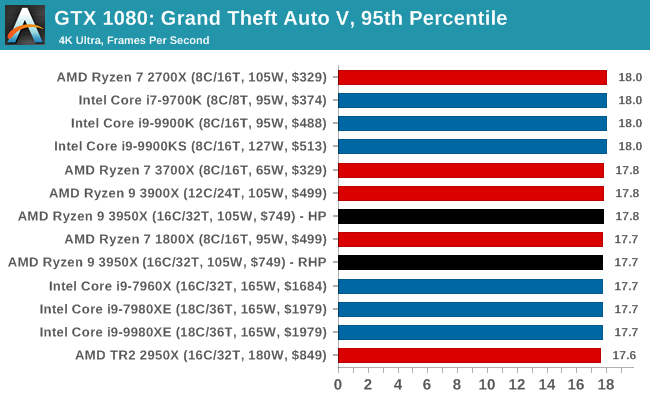 |












206 Comments
View All Comments
tmanini - Thursday, November 14, 2019 - link
depends on your development needs: in the article is states dual-channel memory. Not 4 or 6 channel.Spunjji - Thursday, November 14, 2019 - link
I have a question about the power numbers - do they look significantly different with only one thread loaded per core?ksec - Thursday, November 14, 2019 - link
If we look at the benchmark running on Open Source program, it is clear AMD tends to have a much higher chance of performance being on par or beating Intel. I wonder how much optimisation from compiler to other library giving advantage to Intel and not to AMD.Maxiking - Thursday, November 14, 2019 - link
Pretty sad cpu, bottlenecking ancient 1080gtx at 1080p. Just lolQasar - Thursday, November 14, 2019 - link
come on maxiking, the 9xxx cpu's are that bad.. after all they need the extra frequency just to keep what little performance advantage they, at times, barely still have.stux - Thursday, November 14, 2019 - link
Great review, but where are the compilation benchmarks?Ian Cutress - Thursday, November 14, 2019 - link
I was having issues getting the benchmark to work on Win 10 1909, and didn't have time to debug and retest. I'm hoping to fix it for the next benchmark suite update.stux - Thursday, November 14, 2019 - link
Thanks Ian, looking forward to the update.kc77 - Thursday, November 14, 2019 - link
I don't see the TDP comparisons with the Intel rig. Are they there? I see AMD TDP mentioned but not the Intel parts.willis936 - Thursday, November 14, 2019 - link
I moved to the midwest recently and I have to wonder: Who is christ and why does everyone care what CPU he has?